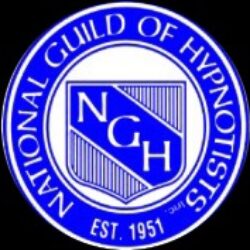Several years ago, I stayed for 3 nights at the Courtyard Bogota Airport for a business trip.
Jan 21, 20, 9:17 am
#2
Join Date: Nov 2010
Location: zurich
Programs: Miles&Smiles Gold
Posts: 393
Relax be happy and dont think too much. New contacts around the world are always good.
northernstar84
Find More Posts by northernstar84
Jan 21, 20, 9:21 am
#3
Join Date: Jan 2014
Posts: 377
Quote:
Originally Posted by jeanie
Several years ago, I stayed for 3 nights at the Courtyard Bogota Airport for a business trip.
Today, I got an invitation to connect on LinkedIn from someone I don’t know. I’m in sales, so I typically check to see if the person is someone I might do business with in the future. The woman is from Bogota, Colombia, and the only thing I can see that we have in common is that she was a reservation agent at the Courtyard Bogota Airport from June, 2016 – July, 2017. That seems to be about the right time frame for the business trip I took to Bogota. I am a straight woman, and we didn’t hook up or anything like that. I don’t remember speaking to or meeting her at all.
This whole thing just strikes me as odd! Anyone else have a reservations or front desk agent contact you like this years later? If she kept my personal information from that stay, it’s pretty creepy! BTW, I ignored the invitation.
I think it’s more of Linkedins creepy algorithms on who it suggests to connect with and the front desk agent accidentally clicking to connect with you or wobb not understanding how Linkedin works. I’ve seen very random people in my suggestions that a former brief acquaintances that I’ve never had a professional relationship with. I’ve had two or three front desk people request to connect with me in the past from hotels I frequent. Kind of odd but whatever.
TXJeepGuy, Zeeb, nancypants and 3 others like this.
longtimereader firstimeposter
Find More Posts by longtimereader firstimeposter
Jan 21, 20, 9:36 am
#4
I have had hotel personnel attempt to connect with me on LinkedIn, but it is usually a manager or someone with whom I interacted a lot over the course of several stays. Never years later.
Jan 21, 20, 9:39 am
#5
MSPeconomist
A FlyerTalk Posting Legend
Join Date: Sep 2009
Location: Minneapolis: DL DM charter 2.3MM
Programs: A3*Gold, SPG Plat, HyattDiamond, MarriottPP, LHW exAccess, ICI, Raffles Amb, NW PE MM, TWA Gold MM
Posts: 87,272
It’s also a former employee of the hotel. This does raise the question of whether she took guest names and contact information with her when she quit or was fired.
jeanie and mctaste like this.
MSPeconomist
Find More Posts by MSPeconomist
Jan 21, 20, 9:41 am
#6
Join Date: Apr 2007
Location: Michigan’s West Coast and wherever my clients need me
Programs: Delta Diamond (2+M MQMs), Hertz PC, Marriott Titanium
Posts: 614
Quote:
Originally Posted by MSPeconomist
It’s also a former employee of the hotel. This does raise the question of whether she took guest names and contact information with her when she quit or was fired.
Excellent point.
jwlowry
Find More Posts by jwlowry
Jan 21, 20, 9:52 am
#7
Join Date: Oct 2018
Programs: Mileage Plus, Marriott Rewards, Southwest Rapid Rewards
Posts: 125
Quote:
Originally Posted by longtimereader firstimeposter
I think it’s more of Linkedins creepy algorithms on who it suggests to connect with and the front desk agent accidentally clicking to connect with you or not understanding how Linkedin works. I’ve seen very random people in my suggestions that a former brief acquaintances that I’ve never had a professional relationship with. I’ve had two or three front desk people request to connect with me in the past from hotels I frequent. Kind of odd but whatever.
This was my thought… not to mention if you link it to your email history it will try to connect with anyone you’ve ever sent an email to.
nancypants likes this.
TXJeepGuy
Find More Posts by TXJeepGuy
Jan 21, 20, 10:04 am
#8
Quote:
Originally Posted by TXJeepGuy
This was my thought… not to mention if you link it to your email history it will try to connect with anyone you’ve ever sent an email to.
I don’t allow any of my social media accounts access to my contacts or email accounts. I also don’t have any LinkedIn 1st or 2nd connections in common with the woman. I think she took customer information from the hotel when she left.
Jan 21, 20, 11:49 am
#9
mctaste
Suspended
Join Date: Dec 2019
Posts: 452
There are few people I need to network with more than former hotel staff from Bogota. I vote click Accept and see what happens!
mctaste
Find More Posts by mctaste
Jan 21, 20, 4:02 pm
#10
Join Date: May 2009
Location: Seattle, WA
Programs: DL Diamond 1MM, UX Suma Gold, Marriott Bonvoy️ Gold, Hilton Gold, Avis Preferred, Hertz PC
Posts: 3,532
Many social networks have a tool that scrapes your e-mail contacts and “imports” them as invitations. The most likely explanation here is this agent e-mailed you a welcome message, as many hotels do for elites; this caused your contact information to be automatically saved in their address book by their e-mail application, and then when they signed up for LinkedIn that information was matched to your profile.
This obviously isn’t a best practice, but it’s not uncommon; I’ve even gotten macro viruses e-mailed from airlines in the past that I’ve corresponded with. For an emerging market hotel, I suspect more of the CRM is done manually than you might expect, and it’s not hard to imagine an employee syncing a mobile device and then retaining that contact list when they left the position for their next role.
To avoid this sort of thing happening, I like to give my social networks alternate e-mail addresses and phone numbers so my profile can’t be correlated directly back to my real world identity. But for someone in sales, I can certainly appreciate the need to appear more visible to your clients…
BenA
Find More Posts by BenA
Jan 21, 20, 4:56 pm
#11
Join Date: Feb 2010
Programs: MR-Amb, Hyatt-Globalist, AA-EXP
Posts: 1,510
Was it a personal invitation or just a generic one? If it was generic this sounds much more like she activated some auto-connect feature from linkedin that searched through her emails for potential contacts. As others have noted, this generates some really odd invitations.
spgplat21
Find More Posts by spgplat21
Jan 21, 20, 5:28 pm
#12
jeanie
Original Poster
Join Date: Apr 2004
Programs: AA plt 2 mm, Marriott LTT, HH dia
Posts: 1,199
Quote:
Originally Posted by BenA
Many social networks have a tool that scrapes your e-mail contacts and “imports” them as invitations. The most likely explanation here is this agent e-mailed you a welcome message, as many hotels do for elites; this caused your contact information to be automatically saved in their address book by their e-mail application, and then when they signed up for LinkedIn that information was matched to your profile.
As I mentioned earlier, LinkedIn doesn’t have access to my contacts or my email. So it would be impossible for that to happen. I am one of those people that sets strict privacy settings on my social media accounts. I don’t want my business contacts to get spammed because my contacts got mined. It’s not a good way to conduct business. LinkedIn frequently asks me to link my contacts with their site, and I never do.
Quote:
Originally Posted by spgplat21
Was it a personal invitation or just a generic one? If it was generic this sounds much more like she activated some auto-connect feature from linkedin that searched through her emails for potential contacts. As others have noted, this generates some really odd invitations.
If she didn’t write you a personal message, I would be surprised that she would steal customer information from the hotel just to send random linkedin invites to everyone.
The only way she could have gotten my email would have been to take it from my Marriott reservation. Since she no longer works there, any work email address she might have had should have been disabled years ago. And I don’t email personal accounts for Marriott employees while staying at a hotel. BTW, I think this is really weird as well. That’s why I posted about it.
jeanie
Find More Posts by jeanie
Jan 21, 20, 5:28 pm
#13
Join Date: Jul 2009
Programs: DL PM, HH Diamond, Marriott Plat, AA, WP
Posts: 800
I would guess it’s a weird linkedin algorithm, I get suggestions of people not in my immediate network often, and sometimes see people from five or ten years ago that I had a glancing passing knowledge of. I like the idea that she sent you a welcome email three years ago, and that email was used as a connection or a contact point.
daloosh
Find More Posts by daloosh
Jan 21, 20, 5:32 pm
#14
Join Date: Feb 2013
Location: DCA
Posts: 6,828
It doesnt make sense that someone stealing personal information would reach out directly to a victim – for what purpose? Most likely a bot, crawler, or some sort of algorithm using scraped data.
arlflyer
Find More Posts by arlflyer
Jan 21, 20, 5:45 pm
#15
Join Date: Jan 2017
Programs: SPG Lifetime Platinum
Posts: 1,044
I am connected to a ton of hotel workers on LinkedIn. It is nice as I keep in touch with them – when we meet at same or different property it is like a reunion I saw someone last month that I hadn’t seen since 2011 but we had been connected on LinkedIn.
LinkedIn is for professional networking and hotel stays are part of that.
My guess this was a weird algorithm thing. I opened a Facebook account a few months ago. and my 7th grade crush popped up. I hadn’t thought of her in 30 years, pre internet. it scared heck out of me how much they scrape
Reply
SHLTP
Find More Posts by SHLTP
Thread Tools
Show Printable Version
Suggest Thread for TalkMail
Search this Thread
Thread Tools Show Printable Version
Email this Page
Search Engine: Use vBulletin Search Use Threadloom Search
Advanced Search
MyFlyerTalk Private Messages Subscriptions Who’s Online Search Forums Forums Home Miles&Points Coronavirus and travel Information Desk MilesBuzz Mileage Run Deals Mileage Run Discussion Premium Fare Deals Hotel Deals S.P.A.M. Airlines and Mileage Programs Aegean Airlines | Miles&Bonus Aer Lingus | AerClub Air Canada | Aeroplan Air France, KLM, and Other Partners | Flying Blue Air France Frequence Plus KLM Flying Dutchman Air New Zealand | Air Points Alaska Airlines | Mileage Plan Virgin America | Elevate pre 2018 Alitalia | MilleMiglia All Nippon Airways | ANA Mileage Club American Airlines | AAdvantage Asiana | Asiana Club Avianca | LifeMiles and Amigo British Airways | Executive Club Cathay Pacific | Marco Polo Club Copa | ConnectMiles Delta Air Lines | SkyMiles EL AL | Matmid Emirates | Skywards Etihad Airways | Etihad Guest Eva Air | Infinity MileageLands Finnair | Finnair Plus Frontier Airlines | Frontier Miles Program Hawaii-Based Airlines Iberia Airlines | Iberia Plus India-Based Airlines Japan Airlines | JAL Mileage Bank JetBlue | TrueBlue Korean Air | SkyPass LATAM | LATAM Pass and LATAM Fidelidade Lufthansa, Austrian, Swiss, Brussels, LOT and Other Partners | Miles & More Swiss International Air Lines Malaysia Airlines | Enrich Qantas | Frequent Flyer Qatar Airways | Privilege Club Russia-Based Airlines SAS | EuroBonus Singapore Airlines | KrisFlyer South African Airways | Voyager Southwest Airlines | Rapid Rewards TAP Air Portugal | Miles&Go Thai Airways | Royal Orchid Plus Turkish Airlines | Miles&Smiles United Airlines | MileagePlus Virgin Atlantic Airways | Flying Club Virgin Australia | Velocity WestJet | WestJet Rewards Other Asian, Australian, and South Pacific Airlines Other European Airlines Other Middle Eastern and African Airlines Other North and South American Airlines Global Airline Alliances oneworld SkyTeam Star Alliance Hotels and Places to Stay Accor | ALL (Accor Live Limitless) Best Western | Best Western Rewards Choice | Choice Privileges Hilton | Hilton Honors Hyatt | World of Hyatt Small Luxury Hotels (SLH) InterContinental Hotels | IHG Rewards Club and Intercontinental Ambassador Marriott | Marriott Bonvoy Radisson Hotel Group | Radisson Rewards Wyndham | Wyndham Rewards Other Hotel Chains Non-hotel Lodging Services including Airbnb and VRBO Credit, Debit and Prepaid Card Programs Credit Card Programs American Express | Membership Rewards Chase | Ultimate Rewards Citi | ThankYou Rewards Diners Club | Club Rewards Manufactured Spending Car Rental Programs and Ride Services Ride Services, including Uber and Lyft Rental Car Discussion Budget | Fastbreak (closed to posting) Dollar | Express Renter Rewards (closed to posting) Thrifty | Blue Chip Rewards (closed to posting) Other Car Rental Programs (ie. Alamo, Enterprise) (closed to posting) Avis | Preferred and Budget | Fastbreak Hertz | Gold Plus Rewards National | Emerald Club Sixt | Sixt Card Other Loyalty Programs/Partners Amtrak | Guest Rewards iDine/Rewards Network Gaming Loyalty Programs Travel&Dining TravelBuzz Airport Lounges DiningBuzz Travel Technology Travel Photography Travel Products Travel Tools Travel News External Miles and Points Resources Free Travel Contests and Sweepstakes Travel Safety/Security Trusted Travelers Practical Travel Safety and Security Issues Checkpoints and Borders Policy Debate Online Travel Booking and Bidding Agencies Luxury Hotels and Travel Other Air Travel including Private & Non-Airline Aviation Carbon Conscious Travel Cruises Budget Travel Special Interest Travel Disability Travel GLBT Travelers Religious Travelers Smoking Lounge Travel Health and Fitness Travel with Children Travel with Pets Women Travelers Destinations Africa Africa Americas Canada Caribbean and nearby Atlantic including Puerto Rico Central America Cuba Mexico South America Argentina Brazil Peru America – USA USA New England Mid-Atlantic New York City South Midwest Texas West Las Vegas California Los Angeles San Francisco Pacific Northwest Hawaii Alaska Antarctica Antarctica Asia Asia China Hong Kong and Macau India Japan Korea Singapore Thailand Europe Europe European Rail Travel France and Monaco Germany Italy Nordic Region Russia Spain/Portugal/Gibraltar U.K.
 One interesting legal job is that of a trial consultant. This is a professional whose job it is to advise a lawyer which potential jurors to try to get on the jury for a particular case. This might sound like an inexact judgment to make, but trial consultants use all sorts of sociological, psychological and technological tools in analyzing the background of a particular juror and deciding whether or not he or she is likely to decide in a lawyer’s favor given the facts of a particular case. (There was even a John Grisham novel that revolved around this particular occupation.)
One interesting legal job is that of a trial consultant. This is a professional whose job it is to advise a lawyer which potential jurors to try to get on the jury for a particular case. This might sound like an inexact judgment to make, but trial consultants use all sorts of sociological, psychological and technological tools in analyzing the background of a particular juror and deciding whether or not he or she is likely to decide in a lawyer’s favor given the facts of a particular case. (There was even a John Grisham novel that revolved around this particular occupation.)


 Is it risky to submit a resume to someone you know from someone that you do not know. Duh! Of course that is risky, but it does not mean that the candidate is not viable. No, it just means that the person asked to submit is not sure. However, there are things the job seeker can do to overcome the hesitancy.
Is it risky to submit a resume to someone you know from someone that you do not know. Duh! Of course that is risky, but it does not mean that the candidate is not viable. No, it just means that the person asked to submit is not sure. However, there are things the job seeker can do to overcome the hesitancy.
 Unfortunately, many professionals fail to use LinkedIn to it’s full potential. Their profile is either non-existent, or not attractive to potential clients. And they don’t use it’s great ability to form new, valuable connections.
Unfortunately, many professionals fail to use LinkedIn to it’s full potential. Their profile is either non-existent, or not attractive to potential clients. And they don’t use it’s great ability to form new, valuable connections.